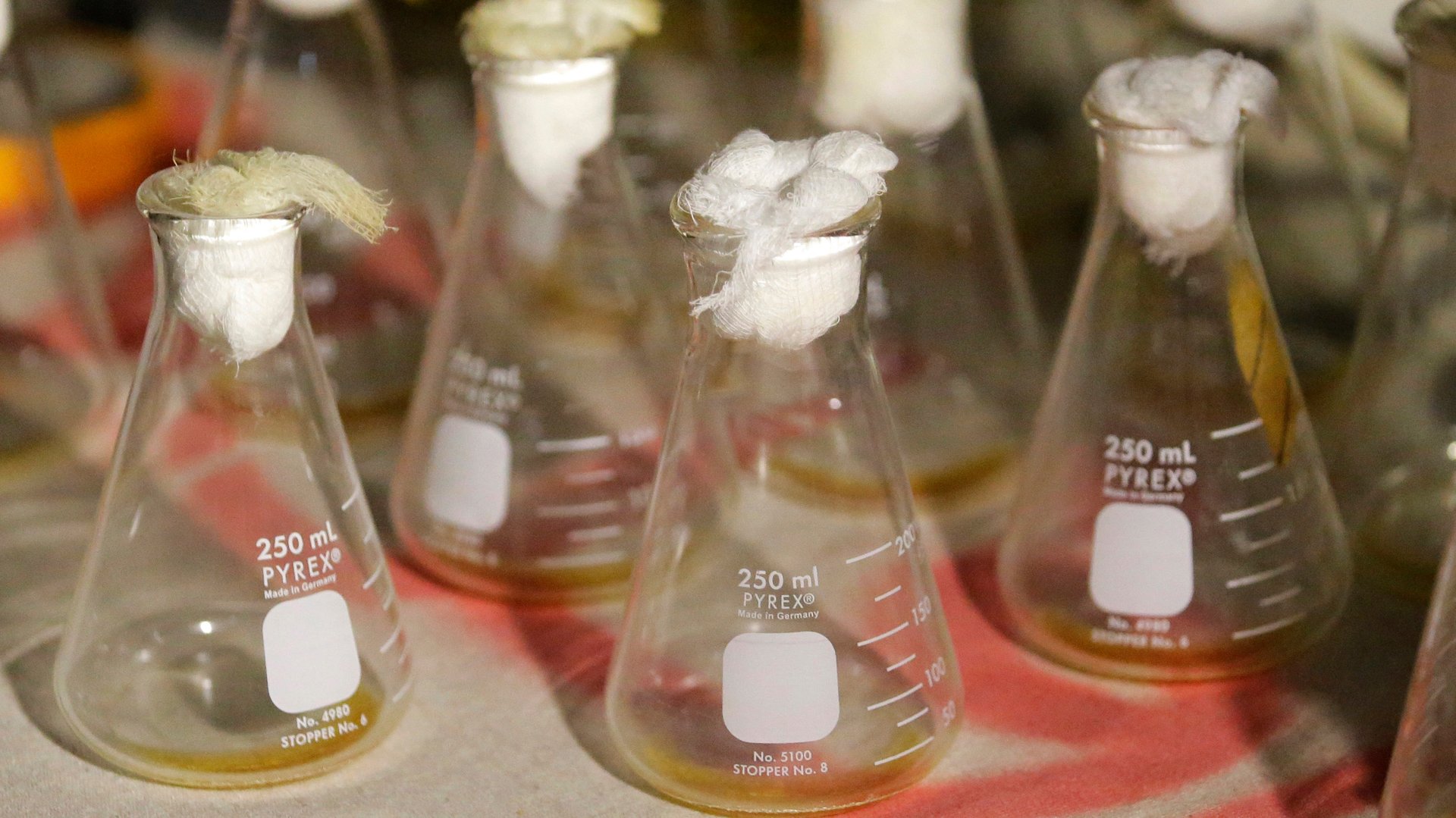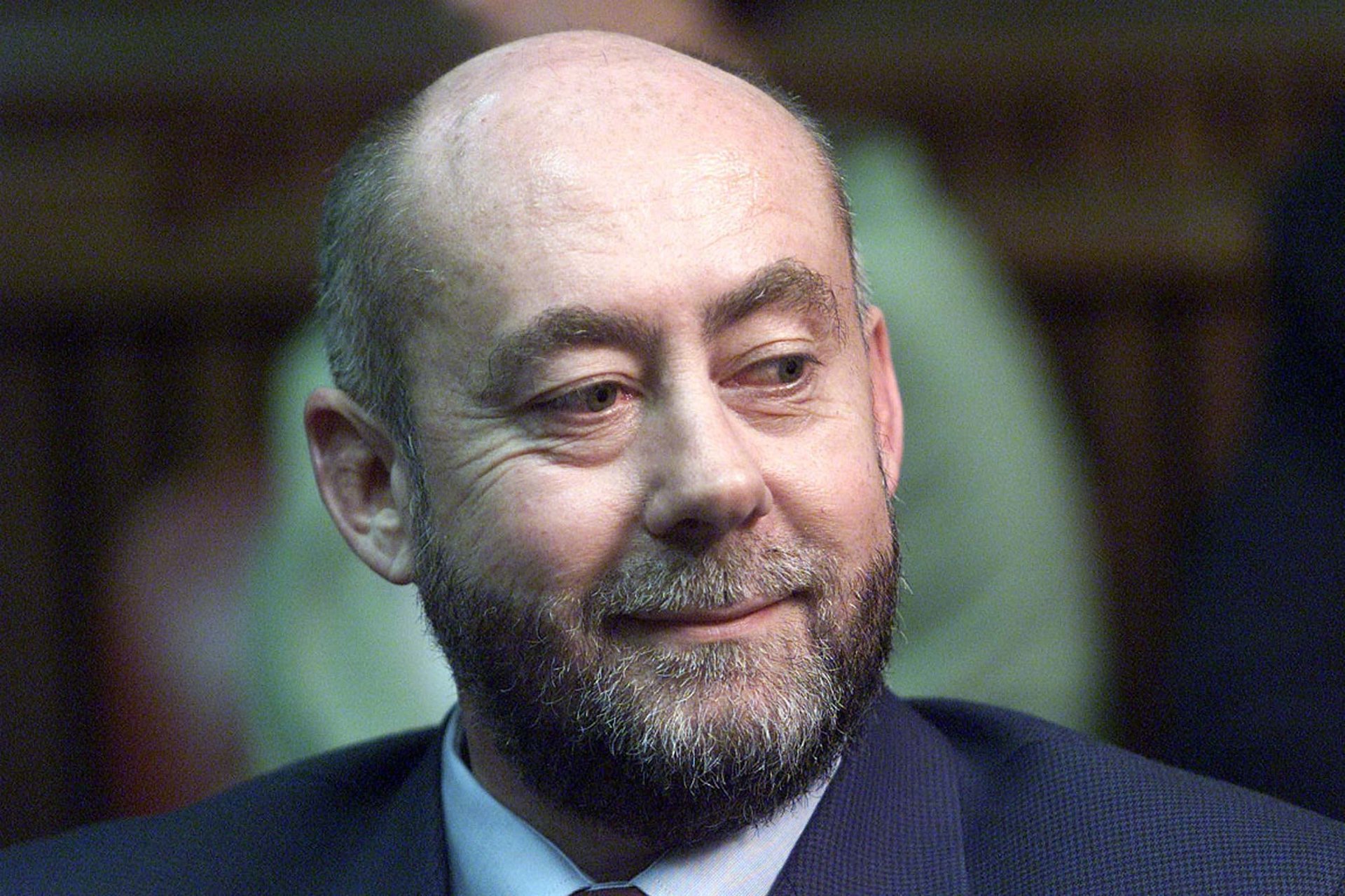Decades later, apartheid South Africa’s chemical and biological weapons program is still hidden
The evidence is shocking: human experiments, plots of mass murder using poisoned beer and anthrax, assassinations attempts through poisoned clothes, tampered tools and exploding letters.


The evidence is shocking: human experiments, plots of mass murder using poisoned beer and anthrax, assassinations attempts through poisoned clothes, tampered tools and exploding letters.
A threat in the form of a baboon fetus—the likely result of animal experimentation—hung from a tree outside Desmond Tutu’s house, to discourage him from speaking out against the inhumanity of apartheid.
These were just some of the methods used during Project Coast, the apartheid government’s top secret chemical and biological warfare program. They’re now artifacts that form part of the Poisoned Pasts, an exhibition and research project that used archive images, animation and audiovisual material to shed some light on the still murky past of Project Coast.
At its height during the 1980s and early 1990s, Project Coast’s malign innovations were used to arm South Africa’s troops fighting in neighboring countries, or by police to control protesting crowds at home, and by the secret agents to target liberation leaders.
Details around the covert project began to come to light as apartheid ended. In the years since, historians have collected roughly 5,000 pages of documents, military memos some personal photos, trying to uncover the true extent of the covert weapons program, but even this is not enough, say the exhibition’s curators, Chandré Gould, Brian Rappert and Kathryn Smith.
Many of the victims’ stories remain silent, killed with their unidentified bodies destroyed without a trace. Among the victims were at least 200 members of Namibia’s liberation movement SWAPO (South West Africa People’s Organization), killed by lethal injection between 1979 and 1988. Several members of Renamo, Mozambique’s rebel movement, were also killed by lethal injection in 1983. Some, like the senior ANC’ leaders Pallo Jordan and Ronnie Kasrils, lived to tell the tale—twice—when assassinations by poisoned umbrellas and then a “modified” screwdriver, failed.
There was once the threat in the form of a baboon fetus—the likely result of animal experimentation—hung from a tree outside Desmond Tutu’s house, to discourage him from speaking out against the inhumanity of apartheid.
“The story of Coast is one of subterfuge, doublespeak, espionage fantasies and real violence as much as it is about defensive research and protecting national interests,” Smith said in a statement.

Remnants of Project Coast are today hidden in plain site by former front companies or medical practitioners who have chosen to remain silent, say the curators. Medical practitioners like Cape Town cardiologist, Dr. Wouter Basson, nicknamed Dr. Death for his work on Project Coast.
Basson was tried and acquitted of 67 charges in 2002, and returned to his private practice, teaching medical students and give motivational talks. It was only after a six-year disciplinary process by the Health Professional’s Council of South Africa that he was found guilty of unethical conduct in 2013. Basson’s defense was that medical ethics during apartheid’s time of conflict, could not be compared with post-apartheid peacetime ethics.
“I don’t understand what the noise is all about. I had nothing to do with apartheid,” Basson told the Sunday Times newspaper (paywall) this year. “I was a soldier doing a job and was helping South Africa with its defensive abilities.”
The researchers and curators behind the exhibition hope that the exhibition will begin to help South Africa reckon with this part of its brutal past. The exhibition is on display at the Nelson Mandela Foundation in Johannesburg until March 2017.